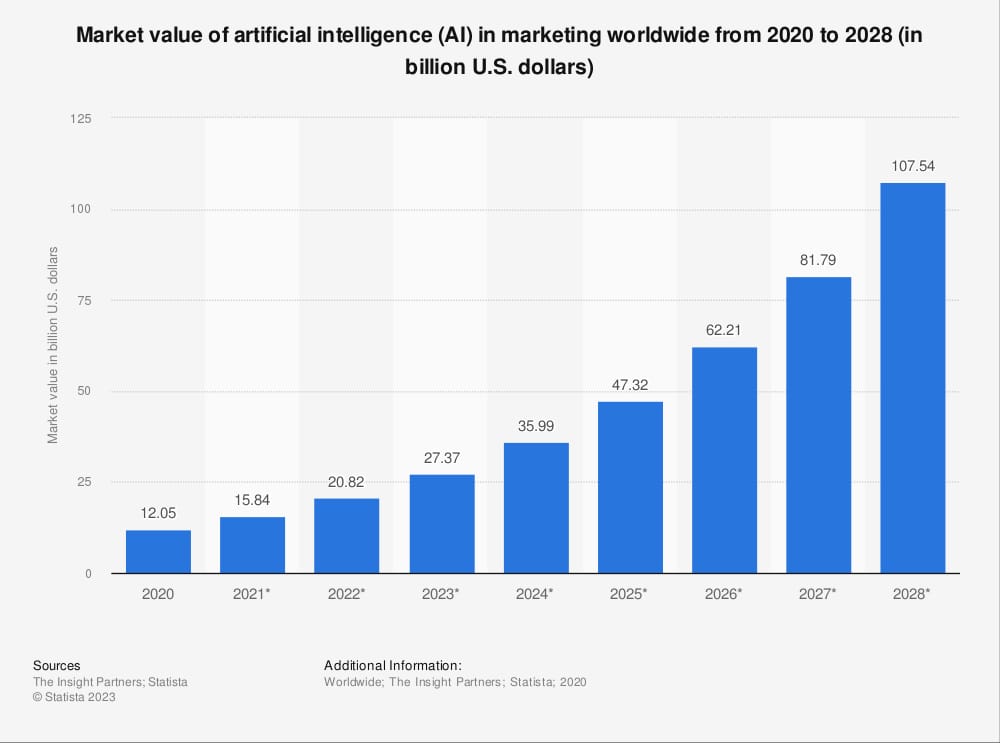Artificial Intelligence (AI) has transformed the advertising landscape enabling marketers to produce personalized and targeted campaigns on a never-before-seen scale. However, advertisers risk being too creative and over-customizing ads to the detriment of their goal.
The Power of AI in Advertising
The Cannes Lions Advertising Festival, which assembled the world’s most prominent tech and advertising companies, just concluded at the Palais in Cannes. And just like every gathering that has taken place since the rise of ChatGPT, the top agenda at the festival was AI.
As expected, every company spoke of its plans towards enhancing advertising and marketing using AI. NVIDIA for instance, through its CEO Jensen Huang, promised to revolutionize the ad industry through generative AI.
“You will create AI factories where the input is creativity, and the output is content. You will generate billions of ads . . . one person at a time,” he said.
Since the mainstream debut of AI, the marketing industry has seen a radical transformation. AI has given marketers a powerful tool to connect with their target market more successfully than before.
According to statistics by Statista, the value of AI in marketing is predicted to rise to $107.5 billion by 2028 from $15.84 billion in revenue in 2021. The statistics further show that in 2023, the use of AI in marketing is predicted to increase profits by roughly $27.4 billion.

By offering personalized information and experiences, accurately predicting future events, and enabling AI-driven content production, AI has proven its ability to completely transform the ads market.
Additionally, AI has enabled smaller companies to compete on an equal footing with large marketers like Mars and Diageo at a more affordable cost. Normally, top advertising firms tend to charge a premium to hire their creative minds hence many small companies opt for other means which also means lower quality.
AI can also help with the repetitive process of creating campaigns for large corporations. The initial concepts can be brought to life by AI rather than being manually mocked up in large numbers. Once one or two are selected, human creators will work on creating the final advertisement.
Is Infinite Fragmentation Practical?
While these applications have been game-changing for the marketing industry, advertisers are looking to go beyond and into infinite fragmentation. This theory, introduced by Nvidia’s Huang, means that marketers will be able to show specialized ads to each of their target audiences.
AI has the ability to reduce the cost of producing subtle adjustments based on human tastes and circumstances, from colors to fonts to background music. As such, no two consumers will see the same ad.
While this is an advertiser’s wildest dream, the idea is not as exciting for consumers. For starters, too much accuracy on one’s preferences and wants can become very unsettling. It makes it seem as though the consumer is being watched.
Lots of companies do this when you leave things in their baskets online! If the email was phrased – did you forget to book?
Then it feels like a reminder/ nudge to book, as opposed to being creepy!
Although you could say that all of the auto/ AI tech is creepy in marketing!— Claire McMinn (@clairedj24) April 21, 2022
As such, it is important to devise a limit as to how much models can learn about consumers.
The AI hype also seems to be exaggerated even in the products being created. For instance, though billions of distinct adverts can be processed by Nvidia’s chips, there aren’t many reasons to purchase a product. The majority of the time, we consume products for the same reasons as everyone else because that is how advertising has always worked.
AI could easily turn out like automated ad buying which is the last technology revolution in ads that promised magical efficiency and more precise consumer targeting.
When it was launched 30 years ago, automated ad buying was a great success as users were intrigued by the idea of ads on web pages. However, as the system began to integrate more data with the aim of showing users the ads that are relevant to them, the process become too complex to be understood and companies began to lose.
According to a study by the Association of National Advertisers, at least 23% of the $88 billion spent yearly by marketers on programmatic advertising on the open web is wasted. This is because automated digital ad buying has developed into a complicated process that involves a variety of advertising, media, and technology companies hence pinpointing the precise location of every expenditure has become challenging.
Related Articles:
- Best Content Marketing Agencies
- Google Ad Tech Integrated in Huge Ad Company Omnicom’s System As EU Joins US DOJ in Eyeing Its Potential Breakup
- New Study Shows In-Game Ads Are King – They Score 20% Higher in Viewability Than the Average of Other Ads
What's the Best Crypto to Buy Now?
- B2C Listed the Top Rated Cryptocurrencies for 2023
- Get Early Access to Presales & Private Sales
- KYC Verified & Audited, Public Teams
- Most Voted for Tokens on CoinSniper
- Upcoming Listings on Exchanges, NFT Drops
